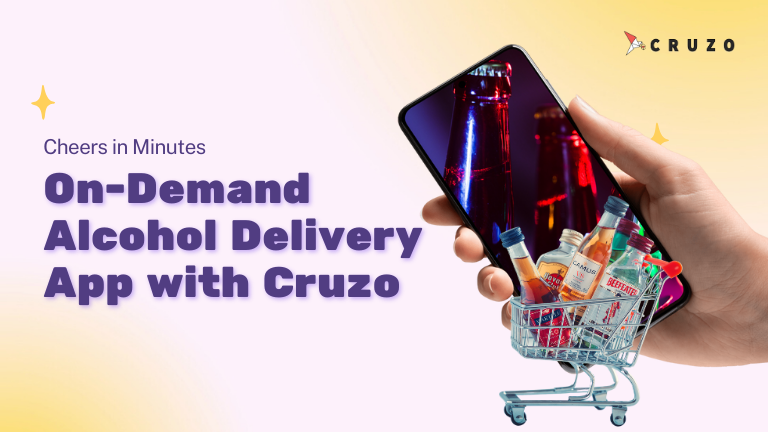
Creating a White-Labeled Mobile App for Alcohol Delivery
- Know Your Market:
Online alcohol sales in the U.S. have grown significantly, with wine accounting for 65% of those sales. Similarly, many countries report substantial revenues from alcohol sales. However, the assumption that “if it’s alcohol, it will sell” is misleading. To succeed, you need a clear understanding of your target audience and market. Begin by researching competitors in the area you want to serve. Analyze their strengths and weaknesses by checking ratings and reviews to identify gaps. Your delivery service should address those flaws to stand out. Since the alcohol business differs from food or grocery delivery, getting the delivery formula right is essential for success. - Adhere to Government Policies:
Regulations around liquor delivery are stringent and must be followed precisely. With the rise of online services during the pandemic, alcohol delivery services have grown, but businesses must comply with government laws and secure the necessary licenses. Whether partnering with beverage stores or selling independently, acquiring permits and adhering to local regulations is critical for smooth operations. - Ensure Age Verification on Delivery:
Verifying age is mandatory for alcohol delivery. Customers must upload a valid ID during order placement, and upon delivery, they must show the original ID to confirm their legal drinking age. Delivery agents must verify the ID before handing over the order. Since age verification rules vary by state, businesses should implement strict policies to avoid legal issues. - Business Model – Store Owner:
Managing a liquor store while running a delivery service can be challenging. A white-labeled alcohol delivery app streamlines this by allowing customers to place orders online and collect them from the store at a scheduled time. This “click and collect” model offers convenience for both store owners and customers by ensuring smooth and quick delivery. - Business Model – Aggregator:
A popular aggregator model, like Drizly’s, allows businesses to collaborate with liquor stores and charge a monthly fee. The fee varies based on location and delivery volume, with Drizly also charging consumers a $5 delivery fee. This model provides flexibility and a consistent revenue stream. Entrepreneurs can base their business on similar models, adjusting fees according to regional demand. - Choose a Robust App Solution Framework:
A successful alcohol delivery app requires a seamless and user-friendly experience. Essential features include easy registration, social media login, product search filters, convenient scheduling, real-time order tracking, multiple payment options, and address management. User-friendly apps with these features enhance interaction and customer satisfaction, giving businesses a competitive edge. - Geolocation and Delivery Tracking:
Real-time tracking is vital for delivery businesses. GPS navigation ensures safe and efficient delivery, providing peace of mind to both customers and delivery agents. Aggregators and facilitators can also monitor delivery movements, improving service quality and security. - Store Location and Pickup Services:
Curbside pickup has gained popularity, offering convenience for both customers and store owners. With a “check and collect” option, users can schedule a pickup and collect their orders without waiting in line. This system ensures contactless transactions and reduces congestion at stores. - Payment Gateway Integration:
Not all countries permit online payments for alcohol purchases, but where allowed, payment gateways streamline the process. The U.S., for example, supports multiple payment platforms, enabling seamless online orders. Integrating popular gateways like PayPal, Stripe, PayU, and RazorPay ensures smooth transactions, enhancing user experience. - Logistics – Owned or Integrated Solutions:
Managing logistics for alcohol delivery can be resource-intensive. While companies like Uber Eats maintain their logistics teams, smaller businesses may find it more practical to partner with third-party delivery services. This partnership model allows businesses to focus on refining their app and services while relying on external teams for delivery. - Reporting and Analytics:
Understanding customer behavior and sales trends is crucial for growth. Analytics offer insights into customer preferences, helping businesses optimize offerings and improve service. By monitoring buying patterns, companies can address issues proactively and explore new business ideas to stay ahead of the competition.
Incorporating these elements into your white-labeled alcohol delivery app will help you build a strong, compliant, and customer-friendly platform, ensuring long-term success in the competitive online alcohol market.
Start your free trial: https://accounts.cruzotec.com/register and Book a free demo session: https://calendly.com/cruzotec/product-demo








